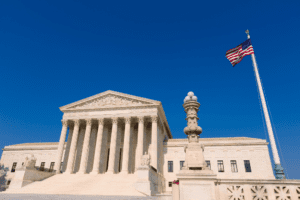
In my view, that rule announces the better reading of the Statute of Northampton—as a broad prohibition on the public carriage of firearms and other weapons, without an intent-to-terrify requirement or exception for self-defense. Although the Statute of Northampton is particularly significant because of its breadth, longevity, and impact on American law, it was far from the only English restriction on firearms or their carriage. See, e.g., 6 Hen. 8 c. 13, §1 (1514) (restricting the use and ownership of handguns); 25 Hen. 8 c. 17, §1 (1533) (same); 33 Hen. 8 c. 6, §§1–2 (1541) (same); 25 Edw. 3, st. 5, c. 2 (1350) (making it a “Felony or Trespass” to “ride armed covertly or secretly with Men of Arms against any other, to slay him, or rob him, or take him, or retain him till he hath made Fine or Ransom for to have his Deliverance”) (brackets and footnote omitted).
Whatever right to bear arms we inherited from our English forebears, it was qualified by a robust tradition of public carriage regulations. As I have made clear, I am not a historian. But if the foregoing facts, which historians and other scholars have presented to us, are even roughly correct, it is difficult to see how the Court can believe that English history fails to support legal restrictions on the public carriage of firearms.
The dissent continues to undermine a lot of its own points by conducting a lengthy review of old English cases. If it did not believe the majority should resort to history as a means to reach its decision, the dissent should not spend so much time reviewing that same English history.